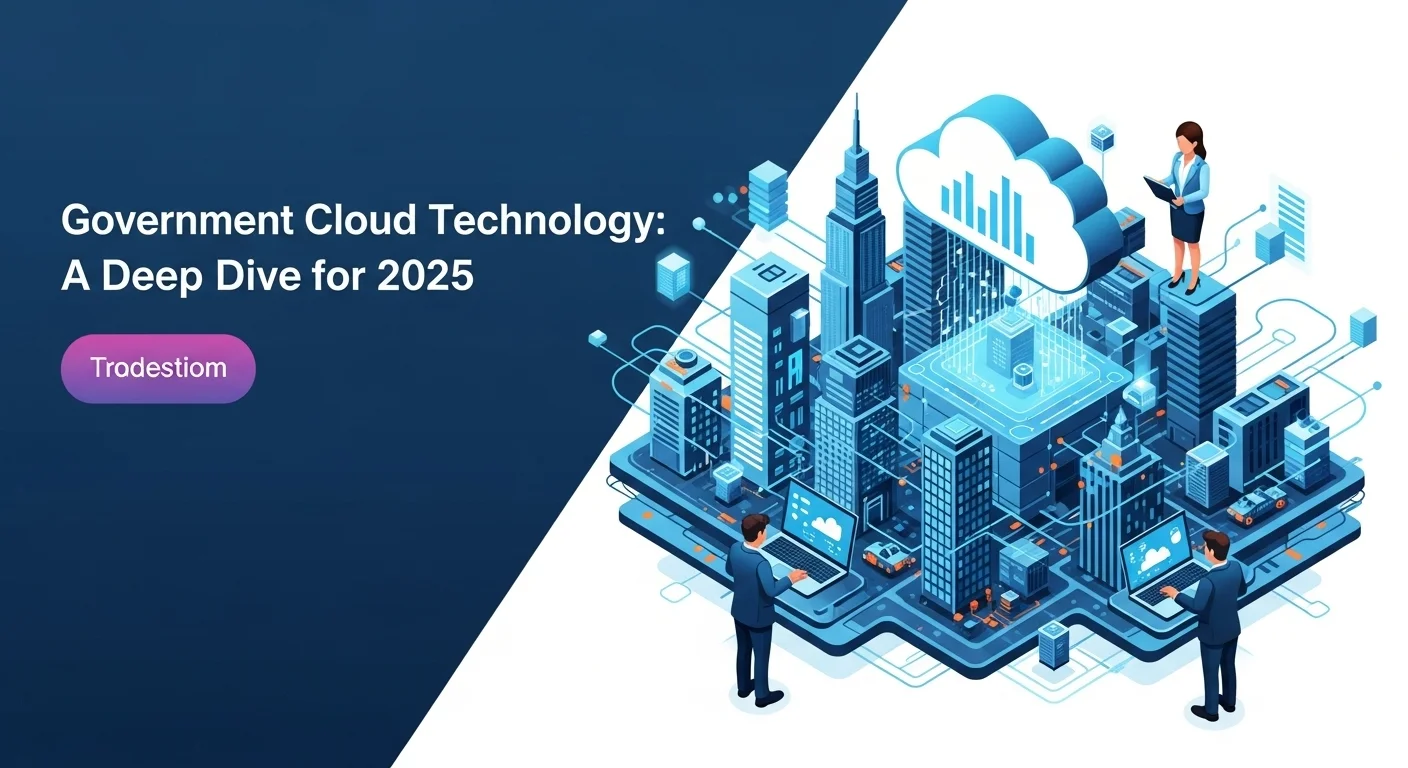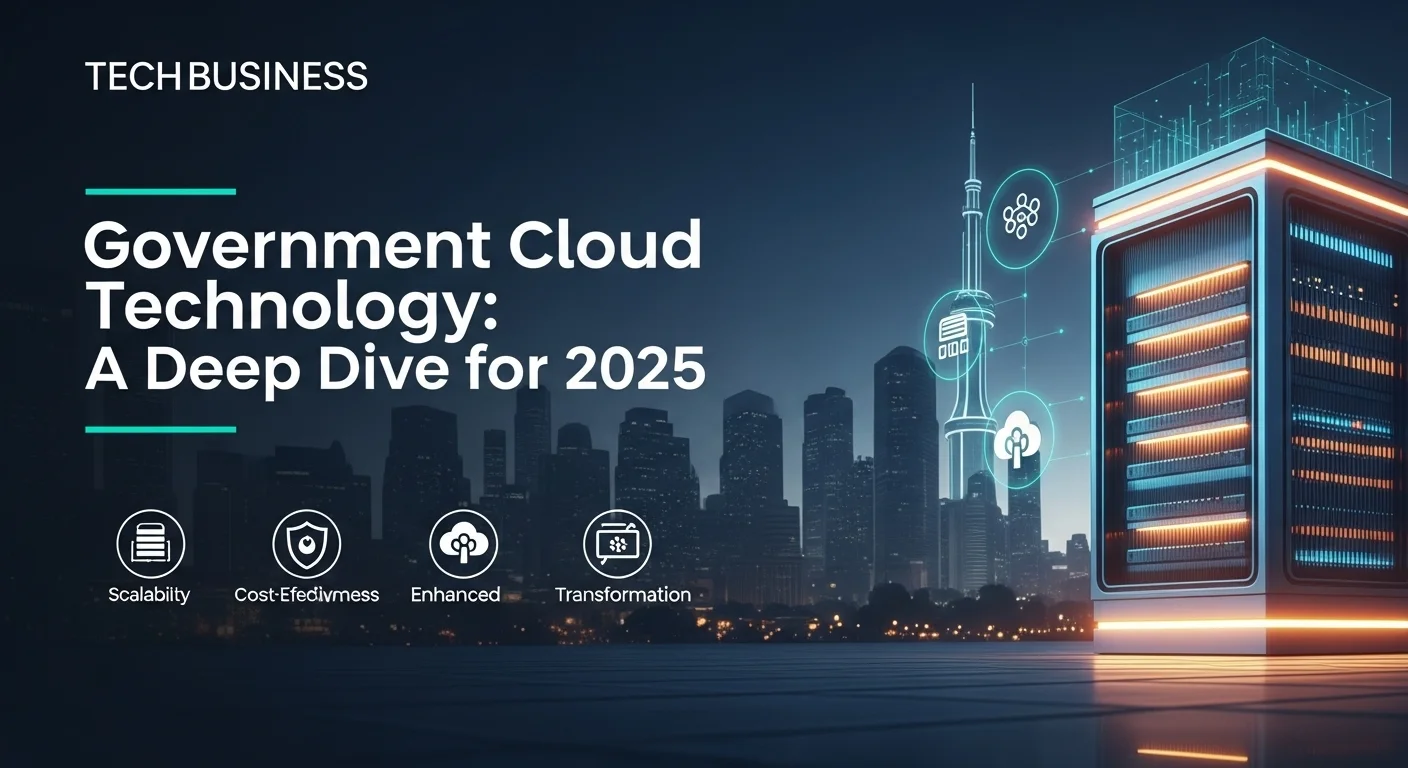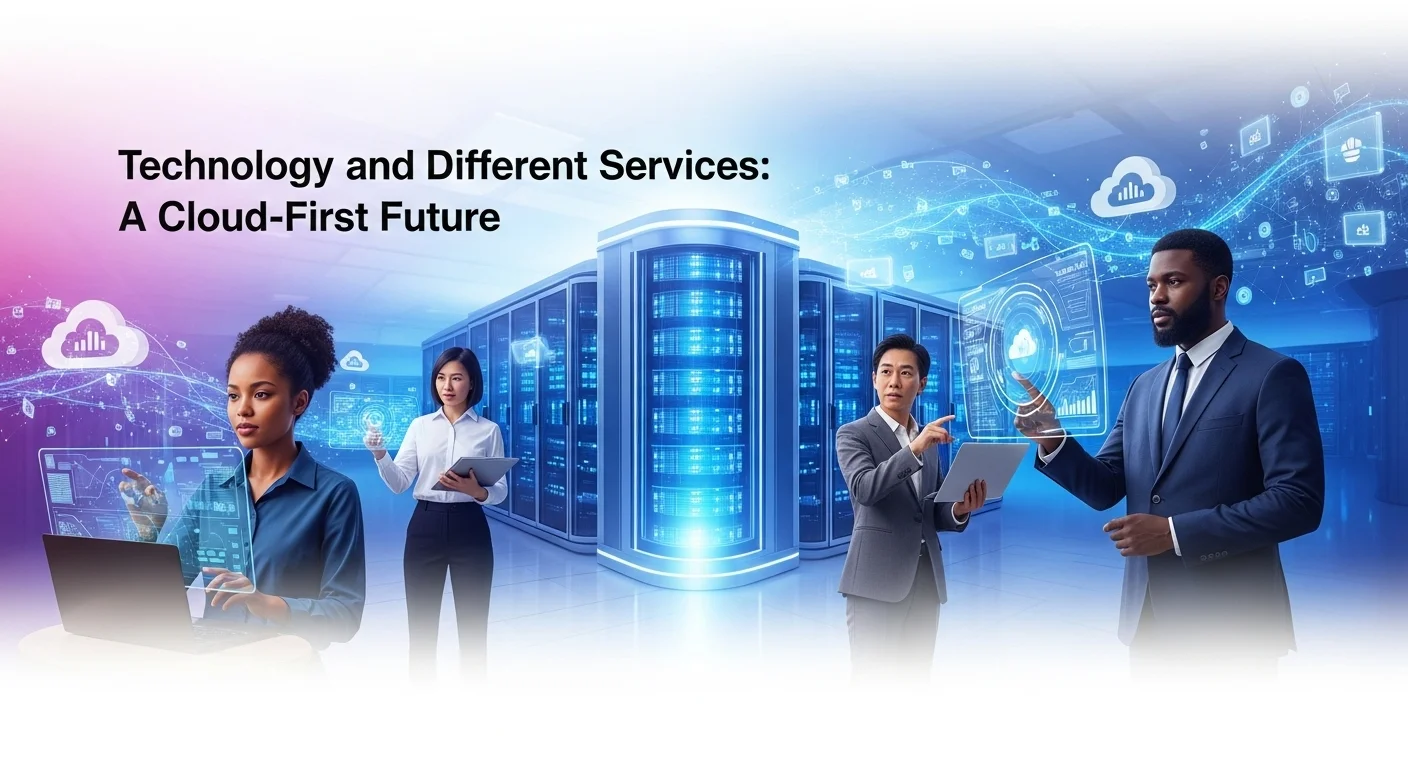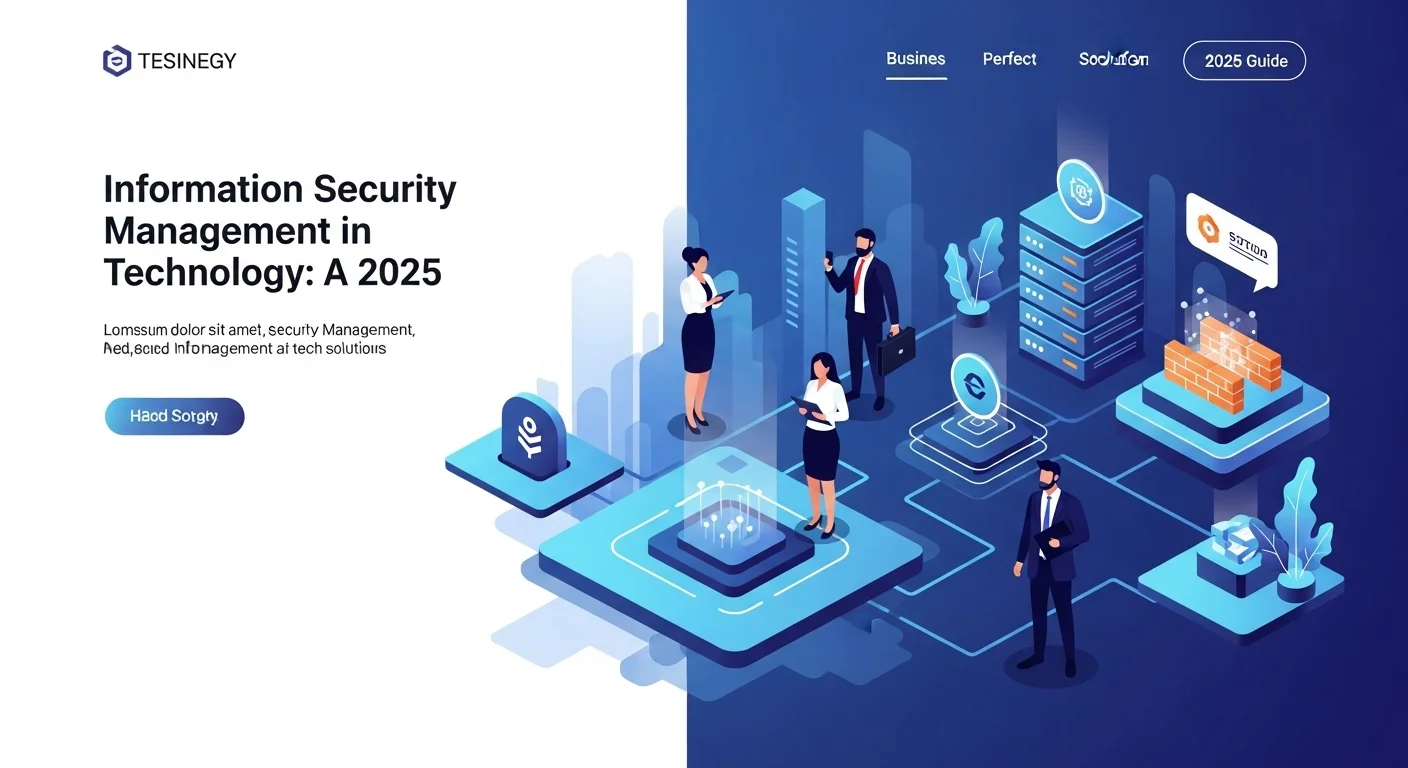The Insider's Guide to Government Cloud: Navigating Security and Strategy in 2025

Executive Summary
Ever wonder what makes the 'government cloud' so different from the one you use every day? It's a world built on ironclad security and strict compliance, designed specifically for public sector needs. In my years as a strategist, I've seen it transform how governments operate. This guide demystifies GovCloud, breaking down everything from the key players like AWS and Azure to the critical security frameworks like FedRAMP. We'll explore why it's essential for any business working with the public sector and how to navigate this unique digital landscape.
Table of Contents
On This Page
What is Government Cloud and Why Does It Matter?
In my line of work, I often use an analogy. Think of the regular cloud as a bustling city library, open to everyone. Now, imagine a special, high-security archive within that library, with vetted librarians and reinforced vaults—that's the Government Cloud. It’s a specialized version of cloud computing, built from the ground up to meet the intense security and compliance demands of public agencies. This isn't just a tech upgrade; it's the engine driving government modernization. It helps agencies become faster, smarter, and more in tune with what citizens need. At its core, government cloud computing provides the same on-demand resources—servers, storage, software—but with a heavy-duty layer of security wrapped around it.
The shift to the government cloud is a game-changer. For years, I watched agencies struggle with clunky, on-premise IT systems. They were expensive to maintain, siloed information, and couldn't scale up during a crisis, like a hurricane or a pandemic. Government cloud technology tears down those walls. It gives agencies the agility to launch new digital services overnight, analyze huge datasets to make better policies, and actually collaborate effectively. When emergencies hit, they can instantly scale up resources to handle a flood of traffic to an info portal or process aid applications, something impossible with old hardware. This move also makes great financial sense, shifting from buying expensive equipment to a pay-as-you-go model that saves taxpayer money.
Dissecting the GovCloud: Models and Nuances
To really get it, you need to understand the two main flavors of GovCloud. The most common is what I call the 'secure neighborhood' model, offered by major commercial vendors. Tech giants have built dedicated, physically separate cloud regions just for government clients. Think of them as high-security compounds, run by cleared personnel, designed to meet the highest compliance standards. The second approach is a government-provided cloud computing platform, where a government builds and runs its own cloud. A great example is Singapore's 'Government on Commercial Cloud' (GCC), which acts as a secure front door for agencies to access commercial cloud services. This model is less common for raw infrastructure but works well for platforms like the U.S. government's cloud.gov, which gives developers a compliant space to build apps without worrying about the hardware underneath.
A successful move to the cloud depends entirely on a smart government cloud strategy. This isn't just about technology; it's a plan that covers policy, people, and processes. The U.S. government's shift from a 'Cloud First' to a 'Cloud Smart' strategy is a perfect illustration. 'Cloud First' was the push to adopt, but 'Cloud Smart' is the wisdom to do it right—focusing on security, smarter purchasing, and training the workforce. A solid strategy means looking at what you have, sorting your data by sensitivity, picking the right cloud model (public, private, or a mix), and preparing for the big cultural shift that comes with it. You have to understand both the incredible benefits and the real-world challenges, like avoiding being locked into one vendor and keeping costs from spiraling.
The Bedrock of Trust: Government Cloud Security
If there's one thing that defines government cloud, it's an obsession with security. Government cloud security is a complex beast, built on uncompromising compliance frameworks. In the United States, the gold standard is FedRAMP (Federal Risk and Authorization Management Program). I've guided many companies through this process, and it's incredibly rigorous. FedRAMP creates a standard for security assessment, authorization, and monitoring. Think of it like a top-tier safety and security rating for cloud services. Getting a FedRAMP Authorization to Operate (ATO) is tough and expensive, but it's the mandatory ticket for any provider wanting to work with federal agencies. It’s the ultimate seal of approval.
And it doesn't stop at the federal level. Many states saw the value and created StateRAMP, which adapts the FedRAMP model for state and local governments. Then you have even stricter rules for specific sectors, like the Department of Defense (DoD) SRG for military data, IRS 1075 for tax info, and CJIS for law enforcement data. Following these rules isn't a suggestion; it's the absolute foundation of trust. It’s how we ensure that sensitive government and citizen data remains confidential and secure. We're talking about advanced encryption, strict identity management, 24/7 threat monitoring, and secure procedures handled only by vetted U.S. personnel.
Leading Government Cloud Providers and Their Offerings
The GovCloud market is led by a few tech giants who've invested billions to build these digital fortresses. These government cloud providers offer a suite of services tailor-made for public sector clients.
- Amazon Web Services (AWS) GovCloud (US): AWS was the trailblazer. Their GovCloud regions are isolated environments for sensitive data, meeting a huge range of compliance standards like FedRAMP High and DoD IL5. I've seen them used by thousands of agencies for everything from basic storage to advanced AI.
- Microsoft Azure Government: Azure is another titan in this space. They offer a dedicated cloud with physically isolated data centers and networks. Their big advantage is the seamless integration with Microsoft's other products like Office 365 Government, which is a huge plus for agencies already in that ecosystem. They're also very focused on data sovereignty.
- Google Cloud for Government: Google brings its A-game in data analytics, AI, and machine learning to the government sector. Their platform meets FedRAMP High standards and offers powerful tools. A unique offering is their Google Distributed Cloud Hosted (GDCH), which lets organizations run a private Google Cloud on their own premises, a key feature for specific data sovereignty needs.
- Other Key Players: While the big three get most of the attention, don't overlook players like Oracle Cloud Infrastructure (OCI), which is strong in the database world, or Salesforce Government Cloud, which is a go-to for building citizen service applications. SAP also offers secure cloud services for national security clients.
The impact of this technology is immense. For a private company, getting your product onto these platforms opens up the massive government market. For the government, it means everything from running resilient public websites to building complex economic models. I remember seeing Wiltshire Council in England cut IT costs by 25% by moving to the cloud while improving services. That's the real story of government cloud computing—it’s about saving money, strengthening security, and serving citizens better.

A Strategist's Playbook: GovCloud Architecture and Security
To truly master government cloud computing, you need to go beyond the basics. For any tech leader or business strategist, understanding the deep technical and business mechanics is the key to success. This is the playbook I've developed over years of working in this space, covering the architecture, security, and strategies that make the GovCloud ecosystem tick.
Technical Architecture and Deployment Models
The blueprint for any cloud setup is its architecture. In the government world, this blueprint is dictated by security. Choosing the right deployment model is the first, and most critical, decision in any government cloud strategy.
- Public Government Cloud: This is the most popular route. Think of it as a secure, members-only wing in a massive public facility. Agencies use dedicated regions within a provider's infrastructure, like AWS GovCloud or Azure Government. These are completely walled off from commercial regions, ensuring data is handled by cleared personnel according to government rules. The huge benefit here is tapping into the scale and innovation of the big providers without building your own data center.
- Private Government Cloud: This is the custom-built fortress. It’s an infrastructure dedicated to just one government entity, either on their property or hosted by a third party. It offers maximum control and is used for top-secret workloads. The trade-off is higher cost and management complexity, losing some of the agility of the public cloud.
- Hybrid Government Cloud: This is the best of both worlds and, in my experience, the most practical choice. It's like having a secure, high-speed tunnel connecting your private fortress to the public cloud's members-only wing. Agencies can keep ultra-sensitive data on-premise while using the public GovCloud's powerful tools for analytics, development, or citizen apps.
- Multi-Cloud Strategy: More and more, I see agencies using a multi-cloud approach. They use services from several government cloud providers to avoid getting locked into one vendor and to pick the best tool for each job. It adds a layer of management but provides incredible flexibility and resilience.
A really clever concept is the government provided cloud computing platform, like cloud.gov in the US. It's built on top of a commercial cloud (like AWS) but provides a standardized platform layer. This hides the infrastructure complexity, letting developers focus only on building apps in a pre-approved, compliant environment, which dramatically speeds up the certification process.
Deep Dive into Government Cloud Security
Security isn't a feature here; it's the very air you breathe. A strong government cloud security plan is built in layers, a 'defense-in-depth' strategy that is far more than just a firewall.
- Compliance as Code: This is a revolutionary concept. Imagine a digital foreman that automatically checks every new piece of your system to ensure it meets all the safety rules from frameworks like FedRAMP. It's about codifying your security policies into automated scripts, which cuts down on human error and ensures you're always in compliance.
- Identity and Access Management (IAM): This is the absolute cornerstone. GovClouds enforce a 'least-privilege' principle: users and systems get the absolute minimum permissions needed to do their job. Multi-factor authentication (MFA) is non-negotiable, and access is tightly controlled.
- Data Encryption: Data is locked down at every stage. It's encrypted when it's stored (at rest) and when it's moving across the network (in transit). I'm also seeing more confidential computing, which protects data even while it's being actively processed.
- Continuous Monitoring: The threat landscape never sleeps, so neither can your monitoring. These environments are watched 24/7 with AI-powered tools that hunt for suspicious activity. Every single action is logged and analyzed for potential threats. It's a shared responsibility between the provider and the agency to stay vigilant.
- Supply Chain Security: A huge concern now is attackers who target software vendors to get to their clients. GovCloud providers face intense scrutiny of their own supply chains and offer tools to help agencies secure their software development process from start to finish.
Comparing the Top Government Cloud Providers
While there are many players, the 'big three'—AWS, Microsoft, and Google—have the most to offer. Choosing the right one is a pivotal part of any government cloud strategy.
| Feature | AWS GovCloud (US) | Microsoft Azure Government | Google Cloud for Government |
|---|---|---|---|
| Core Strength | The most mature platform with a massive portfolio of services and partners. The established leader. | Unbeatable integration with Microsoft's enterprise ecosystem (Office 365, etc.). Excellent hybrid cloud options. | Best-in-class for data analytics, AI/ML, and Kubernetes. A powerhouse for data-driven projects. |
| Compliance | FedRAMP High, DoD IL2/4/5/6, CJIS, ITAR, IRS-1075. The most comprehensive coverage. | FedRAMP High, DoD IL2/4/5/6, CJIS, ITAR, IRS-1075. On par with AWS for core compliance. | FedRAMP High, DoD IL2/4/5, CJIS. Rapidly expanding its compliance portfolio. |
| Unique Features | The longest track record and largest partner network, which is a huge advantage for finding support. | Offers 'Secret' & 'Top Secret' regions for classified data. Strong commitment to data sovereignty. | Google Distributed Cloud Hosted (GDCH) for private on-premise cloud. Access to cutting-edge AI like Vertex AI. |
| Business Model | Flexible pay-as-you-go, with significant savings through long-term plans. | Similar pay-as-you-go models, but offers extra benefits for existing Microsoft enterprise customers. | Competitive pricing with discounts for sustained use. Very business-friendly contracts. |
Business Techniques and Available Resources
For any business trying to break into the government tech space, here's my advice: start with security certification. Getting your software FedRAMP authorized is your golden ticket. It's a long and expensive journey, but it's the non-negotiable price of entry to the federal market.
A smart move is to tap into the partner networks of the major government cloud providers. I've seen small companies flourish by getting listed on the AWS or Azure Government Marketplaces. It gives you instant credibility and visibility with government buyers. Another huge opportunity is specializing in migration services. Agencies need experts to help them move their old systems to the cloud. If your business can do that, you will be in high demand. Finally, you have to learn the language of government contracts. The entire government cloud computing world is built on a triangle of shared responsibility: the provider, the agency, and the vendor all working together to keep the system secure and efficient.

Pro Tips: Mastering Your Government Cloud Experience
Making the leap to a government cloud environment is one thing; thriving in it is another. I've seen organizations stumble and others soar. The difference often comes down to strategy and a commitment to continuous improvement. Simply moving old systems to the cloud isn't enough. Here are the actionable tips and strategies I share with every public sector leader to help them get the most out of government cloud computing.
Best Practices for a Winning Government Cloud Strategy
A great cloud journey starts with a great map. Your government cloud strategy should be a living document, not something that gathers dust on a shelf.
- Adopt a 'Cloud Smart' Mindset: This is my mantra. Forget the old 'Cloud First' blind rush. 'Cloud Smart' is about making calculated decisions. Before you move anything, ask the hard questions: What is this application's real value? Can it be modernized? Does it even belong in the public cloud? Some things are better left on-premise in a hybrid model or retired completely.
- Get Your Data House in Order First: I can't stress this enough. Before you move a single file, you need a rock-solid data governance plan. Classify your data based on sensitivity—public, sensitive, top secret. This single step will dictate the security controls, where the data can live, and who gets to touch it. It's the bedrock of good government cloud security.
- Design for Failure: The cloud is incredibly reliable, but it isn't magic. You have to design your applications to withstand problems. Use multiple availability zones (which are basically separate data centers in the same region) to protect against local outages. For mission-critical systems, have a disaster recovery plan that uses a whole different region. Hope for the best, but plan for the worst.
- Weave Security into Everything (DevSecOps): Don't treat security as the last step. Integrate it directly into your development pipeline. This means automating security checks so you can find and fix flaws early on. It's the only way to stay secure when you're developing and deploying applications at the speed of the cloud.
Taming the Budget with FinOps
I've seen cloud budgets spiral out of control. The pay-as-you-go model is a double-edged sword. FinOps (Financial Operations) is the discipline you need to wield it effectively.
- See Everything, Tag Everything: You can't control what you can't see. Use tools to get a crystal-clear view of your spending. My number one rule is to enforce a strict tagging strategy. Every single resource must be tagged with its owner, project, and cost center. This builds accountability and shows you exactly where the money is going.
- Hunt Down Waste: Over-provisioning is the silent budget killer. Constantly check if your virtual machines or databases are oversized for their workload. 'Right-size' them. And please, automate shutdowns for development and test environments after hours. Paying for idle machines is like leaving the lights on in an empty building.
- Commit and Save: For your steady, predictable applications, paying on-demand prices is a waste. All government cloud providers offer Reserved Instances (RIs) or Savings Plans. You commit to one or three years and can get discounts of 70% or more. It's a massive cost-saver that too many organizations overlook.
- Automate Your Budgetary Guardrails: Set up automated alerts that scream when a team is about to overspend its budget. You can even implement policies that block users from launching ridiculously expensive or non-compliant resources. Make cost an engineering problem, not just a finance problem.
Leveling Up Your Government Cloud Security
Security is a verb, not a noun. The threat landscape changes daily, and your defenses must evolve with it.
- Embrace Zero Trust: The old 'castle-and-moat' idea of security is dead. A Zero Trust model works on a simple, paranoid principle: 'never trust, always verify.' Every single request to access data must be aggressively authenticated and authorized, even if it's coming from inside your network. This dramatically shrinks the damage a potential breach can cause.
- Be Your Own Attacker: Don't wait for the bad guys to find your weaknesses. Proactively hunt for them yourself. Conduct regular security audits and hire reputable firms to perform penetration tests. Use what you find to make your systems stronger.
- Train Your People Relentlessly: Your employees are your first line of defense, but they can also be your weakest link. Regular cybersecurity training is essential. Teach them how to spot phishing emails, avoid social engineering, and handle data properly. For your tech teams, invest in advanced training on secure coding and the specific security tools of your cloud platform.
- Let AI Be Your Watchdog: The sheer volume of security data today is too much for humans alone. AI-powered security tools can analyze billions of events in real time to spot sophisticated threats and even automate the response. This is no longer sci-fi; it's a necessity.
Helpful Resources and a Look Ahead
To stay on top of your game, you need to stay connected. If there's one document I always have bookmarked, it's the NIST Cybersecurity Framework. It's a fantastic guide for managing risk and its principles are the DNA of standards like FedRAMP.
Looking ahead, the future of government cloud computing is exciting. We're moving towards serverless computing, where you just run code without managing servers, and edge computing, which processes data right where it's created. AI will be everywhere, personalizing citizen services and optimizing logistics. Success on this journey will require a forward-thinking government cloud strategy, an unwavering focus on government cloud security, and a true partnership between government leaders and innovative government cloud providers.
Expert Reviews & Testimonials
Sarah Johnson, Business Owner ⭐⭐⭐
The information on Government Cloud is solid, but I'd love to see more practical examples for business owners like me.
Mike Chen, IT Consultant ⭐⭐⭐⭐
A useful article about Government Cloud. It helped me get a much better handle on the topic, though some parts could be a little simpler.
Emma Davis, Tech Expert ⭐⭐⭐⭐⭐
Excellent article! Incredibly comprehensive guide to Government Cloud. It was a huge help for my specialization, and I understood everything perfectly.



